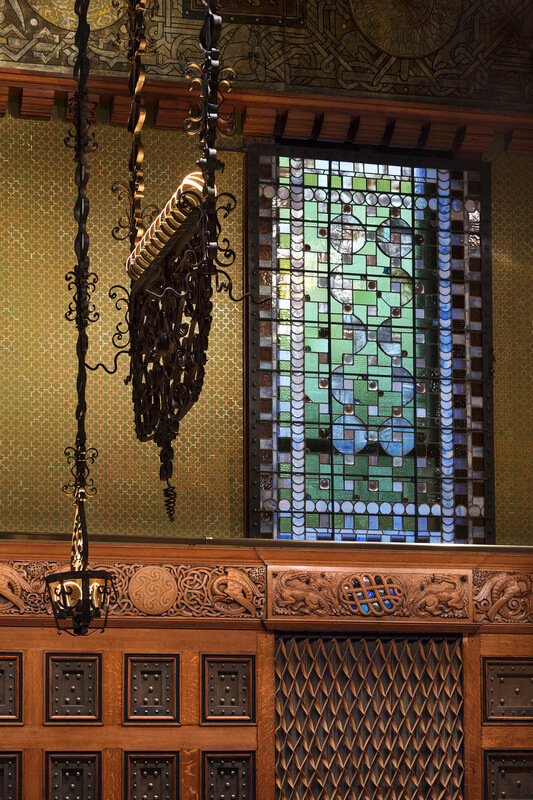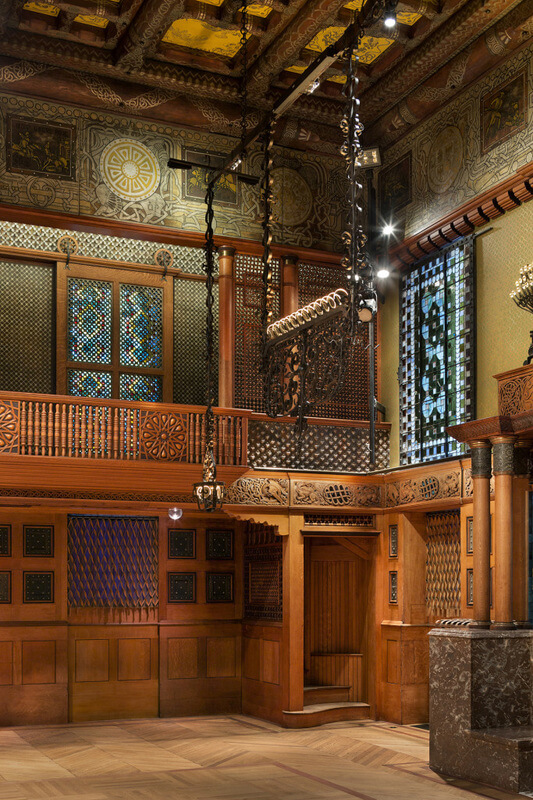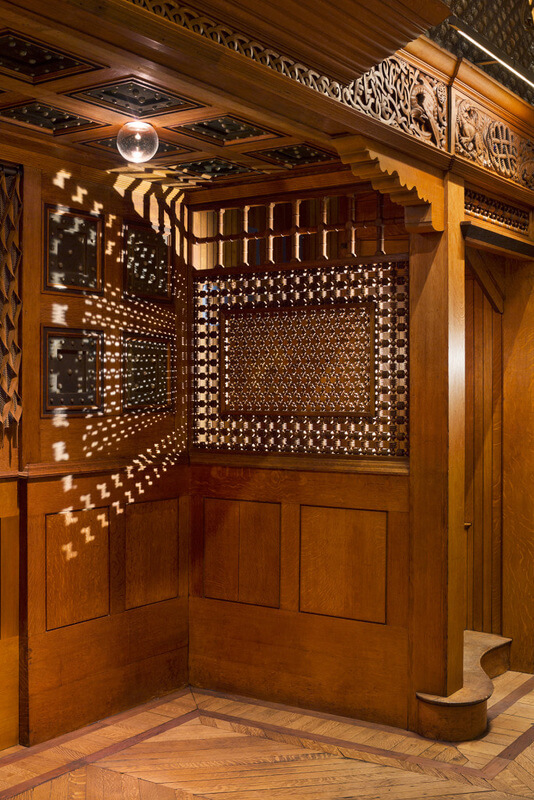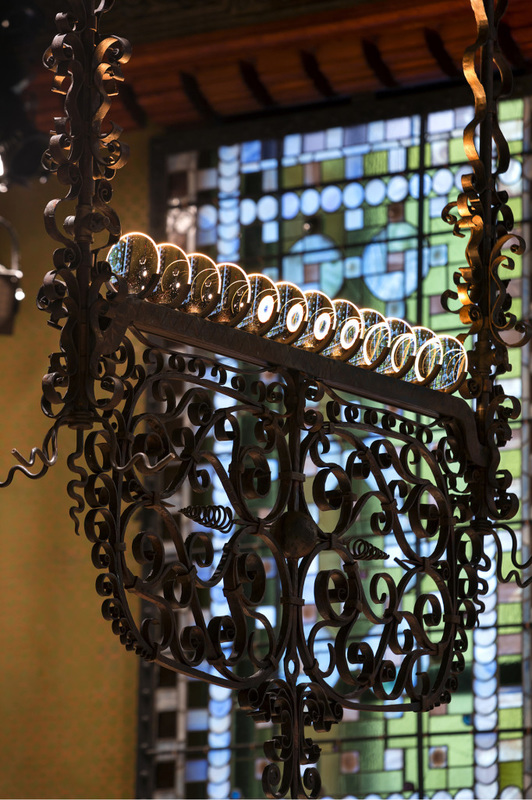There is no other room in New York City which has become as synonymous with the design heritage of the city as the famed Veterans Room at the Park Avenue Armory. This magical interior was created during the Aesthetic Movement period, which flourished in America in the late decades of the 19th century, and has since acquired the legacy of one of the most beloved spaces among New Yorkers. Now, that it has reopened, following a restoration by the Swiss architecture firm Herzog & de Meuron, it will be possible to walk into this gem, or into another world, when interior was perceived as a form of art. Completed in 1881 by the then-brand-new dream team of Louis Comfort Tiffany, Stanford White, Candace Wheeler and Samuel Colman, the Veterans Room was built as a bejeweled boys’ club by New York State’s Seventh Regiment of the National Guard. Stanford White, who later became America’s startarchitect was only 27 years old when he began working on the room, and Louis Comfort Tiffany the artist son of jeweler Charles Tiffany was 31. Along with the home of Mark Twain, the Veterans Room is one of only few surviving examples of interiors by Tiffany, who conducted this ensemble, where California redwood ceiling timbers, stain glass windows, wrought iron chandeliers, mosaics, columns wrapped in chains, glass-and-plaster murals, and glass tiles, testimony to the art of the ‘art interior.’







